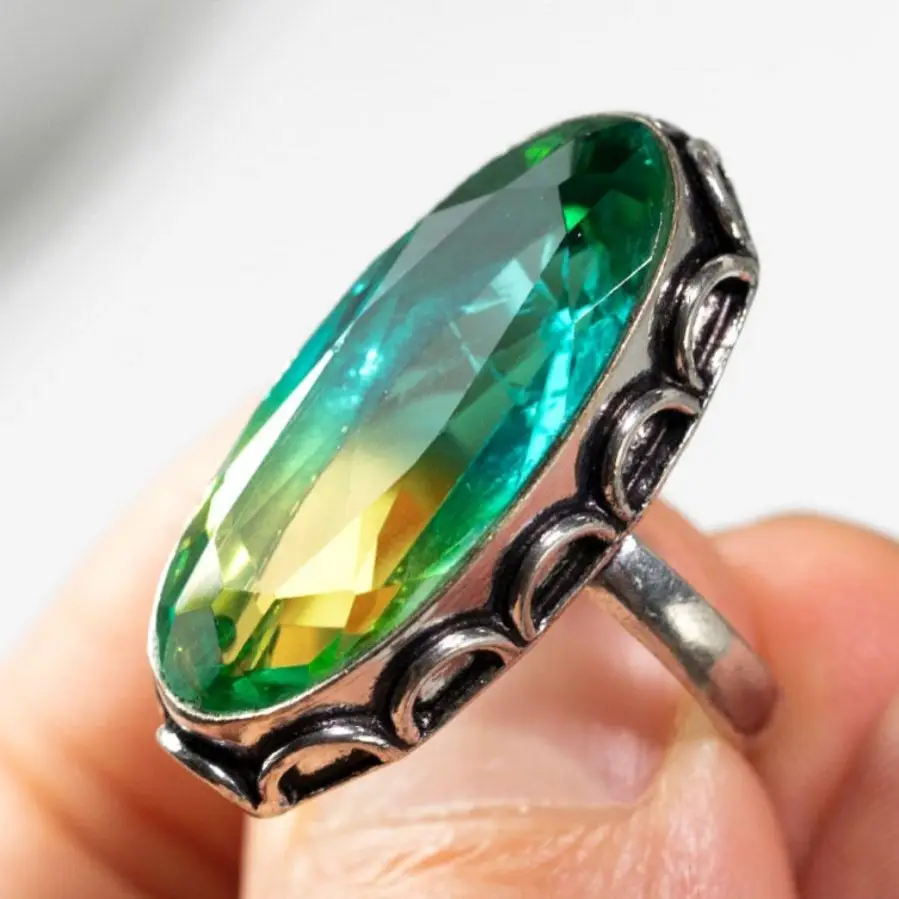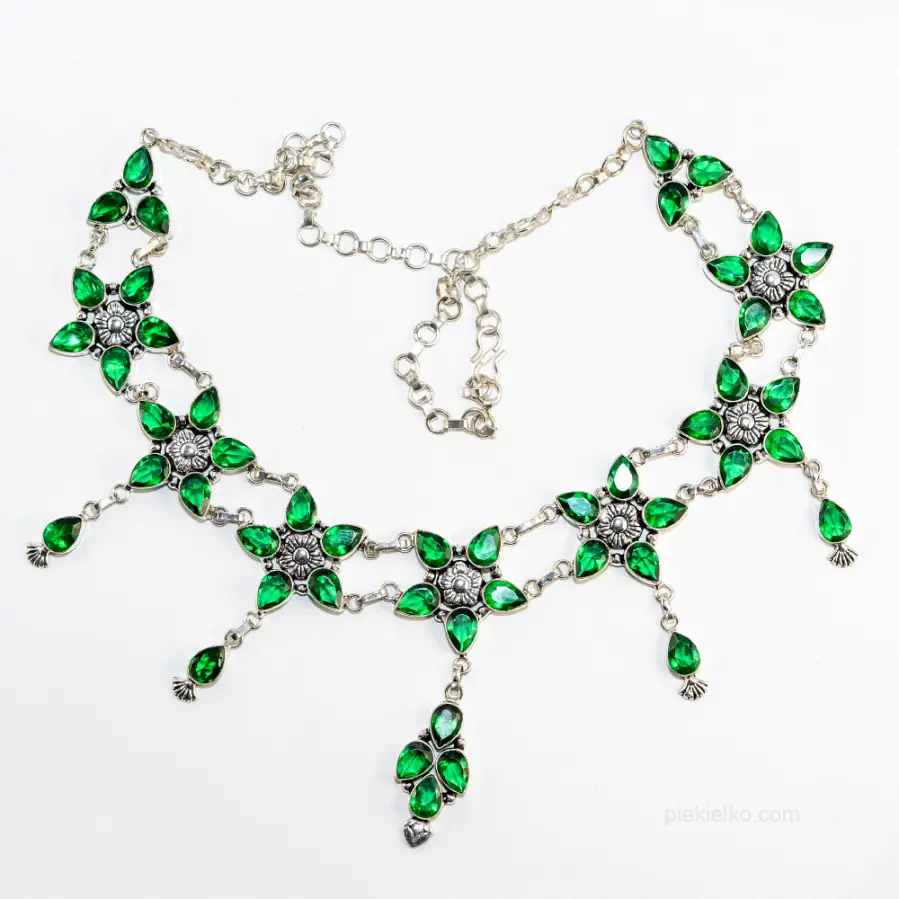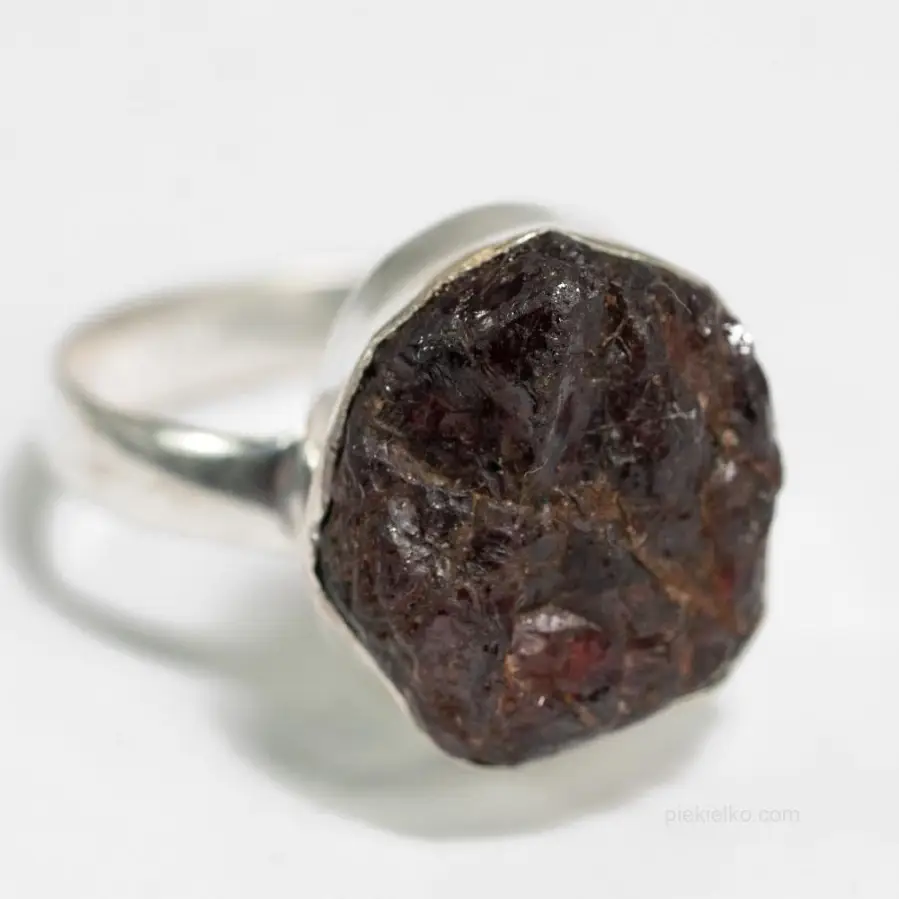Intermediates
Gallantry and accessories
Blog Piekiełka
Tourmaline - a colorful stone that attracts ash

Tourmaline as a gemstone has been known since ancient times. Because it has a wide variety of forms of external appearance, featuring all the colors of the rainbow, it was often confused with other stones. For example, red tourmaline, like ruby or garnet, was referred to as "crimson" in the Middle Ages. Green tourmalines, on the other hand, were confused with emeralds. They only gained their present-day name in the 19th century.
The first tourmalines appeared in Europe in the early 19th century, when the Dutch brought the stones from Ceylon. The first mention of the "new" mineral dates back to 1707 and is of unknown authorship. It says that "AD 1703 the Dutch brought from the East Indies or Ceylon the gemstone tourmaline or tourmaline, which has the property of attracting pipe ash like an iron magnet." Because of its ability to charge electrostatically when rubbed, the Dutch called it an "ash extractor."
The name tourmaline first appears in 1711. The meaning of the name refers to the color of the mineral and the Sinhalese translates as "colored stone."
Properties of tourmaline
Tourmaline is the name of a number of minerals in the silicate group. The general chemical formula is complicated, as a variety of elements can interchangeably appear in the composition of the mineral: calcium, sodium potassium-magnesium, lithium, aluminum, manganese, iron-aluminum, magnesium, chromium, vanadium, iron-silicon, aluminum, boron, beryllium. In the tourmaline group, more than a dozen varieties are distinguished, including drawite, uwite, szerlite and elbaite.
Tourmaline crystallizes in a trigonal arrangement. It forms columnar, rod-shaped, needle-shaped crystals in granular, clustered and radial clusters. The latter are special forms called "tourmaline suns," in which the crystals are arranged radially. Characteristic of tourmaline crystals is an elongated arrangement of furrows.
The sheen of tourmaline is glassy, the break is uneven, shell-like, and the schist is indistinct. The mineral is sometimes transparent or without transparency. In addition, some tourmalines show the cat's eye effect (the appearance of a narrow streak of light, resembling the pupil of an animal), a change of color depending on the polarization of light, or a different color in natural light (yellowish green) and artificial light (orange-red). It was once even believed that tourmaline is a stone that can glow on its own. While glowing is unfortunately not true, the striking color change of tourmaline exists as much as possible.
Tourmaline is classified as hardness 7 to 7.5 on the Mohs scale, i.e. it meets the criterion of a precious stone (above 7 on this scale). The density of tourmaline is 3 bis 3.26 g/cm3.
In addition to its optical effects, tourmaline is also characterized by very good electrical conductivity, and can be electrostatically charged by rubbing or heating. This ability of tourmaline was once used to remove tobacco ash from pipes. It is used in jewelry making, as well as in the electrical industry.
Color of tourmaline
Tourmaline comes in a whole wide range of colors: it can be white, yellow, brown, black, red, pink, green or blue. German mineralogist Dietrich Carsten described "color variations" in 1789, which he justified by the origin of tourmaline:
- gray, almost black tourmaline - from Saxony
- dark green, grass-colored - from Brazil
- from green tones turning to brownish - from Ceylon
- yellowish brown, held against the light, however, dark crimson - also from Ceylon.
Anthropologist Johann Blumenbach supplemented this list of tourmaline colors two years later with "steel-blue," "chive-green" and "brownish-yellow," almost like rosin, as possible tourmaline colors. Among all the colors of tourmaline, he considered yellow-brown specimens typical of Ceylon, the longest known.
In turn, the French mineralogist René-Just Haüy made a comparison of tourmaline with other minerals in 1806:
- green tourmaline - Brazilian emerald
- greenish-blue tourmaline - Brazilian sapphire
- yellowish green tourmaline - peridot from Ceylon.
The reason for such color variation of the mineral is the content of admixtures of various elements. While the formation of blue-colored tourmaline is explained by the presence of iron, titanium is the pigment of green tourmaline, and the pink and yellow mineral is the result of titanium and manganese. The bright green, green-blue and blue color is due to tourmaline's copper content. Depending on the color, tourmaline has different trade names, for example:
- pink - rubellite
- purple - siberite
- yellow - canary tourmaline
- blue - indigolite
- green - chromolite
- gray - aphrysite
- black - sherlite
- colorless - achroite.
Both colorless tourmalines are possible, as well as stones of all colors usually combined in layers. Because of tourmaline's extraordinary richness of color, confusion with other minerals is possible, especially with colored diamonds, emerald, amethyst, andalusite, zircon, peridot, ruby or hyddenite.
There is a variety of tourmaline that has black-colored ends of the crystals, while the rest of the crystals are lighter in color. Brazilian tourmalines, on the other hand, often have a red central part surrounded by a white layer, while the outer part of the stone is green. Tourmalines from South Africa, on the other hand, are often green in the center and red on the outside.
Changing or enhancing the color of a tourmaline is used primarily for stones that are used to make jewelry. With various treatments, the color of stones can be improved. Color intensity is imparted to many minerals by annealing at 450-650 degrees.
The importance and use of tourmaline
Tourmaline has enjoyed great popularity since time immemorial as a jewelry stone for a variety of products: bracelets, pendants, earrings, rings, necklaces. To emphasize the color, the mineral is usually faceted, that is, multi-walled. Tourmaline is liked in the jewelry industry not only because of the variety of colors, but also because this particular stone symbolizes the eighth wedding anniversary. Incidentally, the seventh anniversary corresponds to onyx, the fifteenth to ruby, and the twentieth to emerald.
In addition, tourmaline is one of the important healing stones. In general, it is attributed primarily to its regenerative and invigorating psychological effect. Tourmaline stimulates the pursuit of harmony and clarity in life. It allows one to look more closely at changes and processes, and thus helps control them. Black tourmaline (szerl) provides special protection against negative energies. Tourmaline should preferably be worn in direct contact with the body. Some healers even recommend sticking the stone on diseased areas. When removing scars, tourmaline is rubbed into them to remove excess energy.
Healing tourmaline stone provides a better flow of thoughts in the brain. It can also be used to treat certain headaches. It contributes to the release of hormones and stimulates the pituitary gland. It helps strengthen memory. If a great deal of concentration and focus is needed, tourmaline provides the necessary calm. It makes those in contact with it think calmly and make rational decisions.
Tourmaline and zodiac signs
Depending on the variety of tourmaline, it acts on different zodiac signs. From the point of view of horoscopes, the mineral generally corresponds to all of them, but in a variety of ways. The action of tourmaline can be presented as follows:
- A strong Aries will benefit from pink and red stones. He will feel a surge of strength of purposefulness of action. People under this zodiac sign will attract the attention of the right people, which means a career and an increase in wages.
- By nature secretive Leo will get rid of phobias under the influence of green tourmaline. It will be especially useful for women, as it will dispel their doubts and protect them from jealousy.
- Sagittarius will find support in yellow, pink, blue and red tourmaline.
- For Cancer, blue stones are the most important, they will help to make decisions and remain firm.
- Scorpio is most influenced by black tourmaline. Sherlite will bring him peace and teach him to fight stress.
- Fish are best given green or blue tourmalines. They will be more optimistic and more easily compromise.
- Black and blue tourmaline will protect the Bull from excessive pragmatism and demands.
- Virgo will gain under the influence of black sherlite peace and good mood.
- Capricorn will discover his hidden talents if he is influenced by pink or black tourmaline.
- Twins should be given different colored minerals, which will bring them success in many fields.
- Green and colorless stones are suitable for Libra. They will help realize financial plans and regain inner harmony.
- Aquarius should pay attention to greenish and blue tourmalines. They will help to overcome their own fears and achieve significant successes.
Occurrence of tourmaline
Tourmaline is found in many countries of the world, including Afghanistan, Brazil, Mozambique, Pakistan, Madagascar, Sri Lanka, Tanzania, USA, South Africa.
Jewelry with tourmaline



© Piekielko.com



